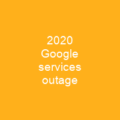Understanding Power Outages: The Silent Threat
Imagine a world where your lights flicker off at the most inconvenient times, leaving you in the dark and questioning how such a fundamental service can fail so spectacularly. A power outage is precisely that—a sudden loss of electrical supply to an end user due to various causes. But what exactly triggers these mysterious disruptions? Is it just a simple case of faulty equipment or something more complex?
Causes of Power Outages
Power outages can occur for numerous reasons, from severe weather conditions and equipment failure to grid overload and planned maintenance. These events are not only inconvenient but also critical in sites where environment and public safety are at risk, such as hospitals and mines, which often have backup power sources.
Categorizing Power Outages
Power outages can be categorized into three phenomena: transient faults (automatically restored), brownouts (a drop in voltage), and blackouts (total loss of power). Rolling blackouts occur when demand exceeds supply, allowing some customers to receive power while others do not. Protective relays and fuses detect overloads and disconnect circuits at risk of damage, but network component shutdowns can cause cascading failures, potentially affecting a larger section of the network.
Resilience in Modern Power Systems
Modern power systems are designed to be resilient, yet they may still experience cascading failures due to rare large-scale events. Researchers have shown that reducing the likelihood of small outages can actually increase the likelihood of larger ones. The electric grid is susceptible to cyberattacks, solar storms, and severe weather, among other threats.
Protecting Computer Systems
Computer systems require protection from power outages using uninterruptible power supplies (UPS) and surge protectors. Restoring power after a wide-area outage is difficult and requires careful coordination between power stations, transmission, and distribution organizations. The grid’s self-organized critical nature means it exhibits unavoidable disturbances of all sizes.
The Critical Point
Operating the grid closer to its critical point can lead to increased blackout frequency, while upgrading less often or increasing demand can move the grid towards its critical point. Threats to the electrical grid include cyberattacks, solar storms, and severe weather. Historically, power grids have experienced blackouts due to various causes, such as overgrown trees touching high-voltage power lines, resulting in significant economic losses.
Smart Grid Features and Mitigation
The concept of a critical point refers to the point where the system undergoes a phase transition from a reliable grid with few cascading failures to an unreliable grid with common cascading failures. While near critical points, component failures have a greater effect on surrounding components due to increased loads, leading to cascading failures that can cause costly and dangerous blackouts.
Some researchers propose using smart grid features and high-voltage direct current firebreaks to prevent disturbances. A mathematical model known as the OPA model has been developed to study cascading failures, which shows that mitigation methods can sometimes increase or have no effect on the frequency of blackouts.

Understanding the complexity of power grids and the inevitability of blackouts is crucial for electric sustainability. While we may not be able to completely prevent these disruptions, efforts to mitigate risks are necessary to ensure a reliable and safe electrical supply. The key lies in balancing resilience with innovation, ensuring that our power systems can withstand the challenges of today’s world.
You want to know more about Power outage?
This page is based on the article Power outage published in Wikipedia (retrieved on March 12, 2025) and was automatically summarized using artificial intelligence.





